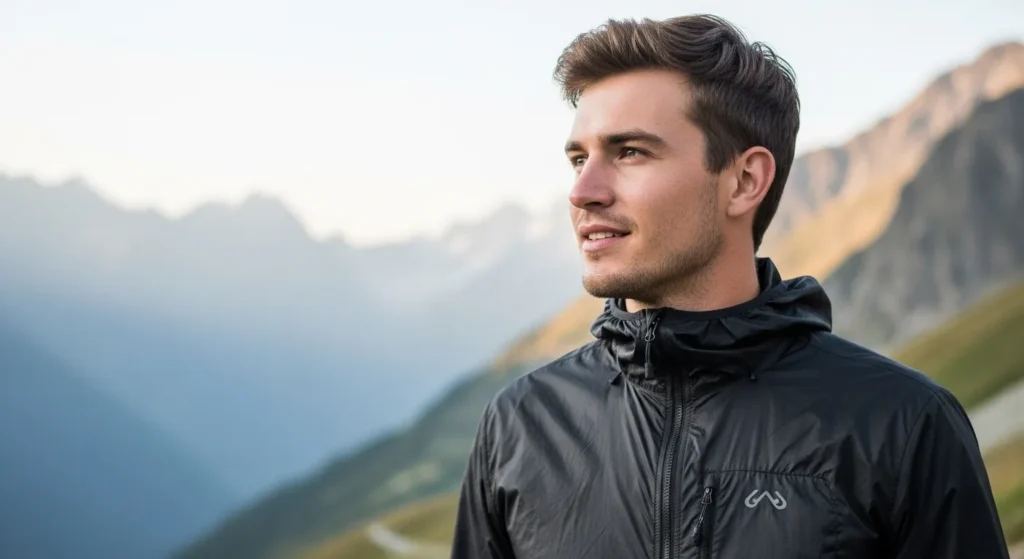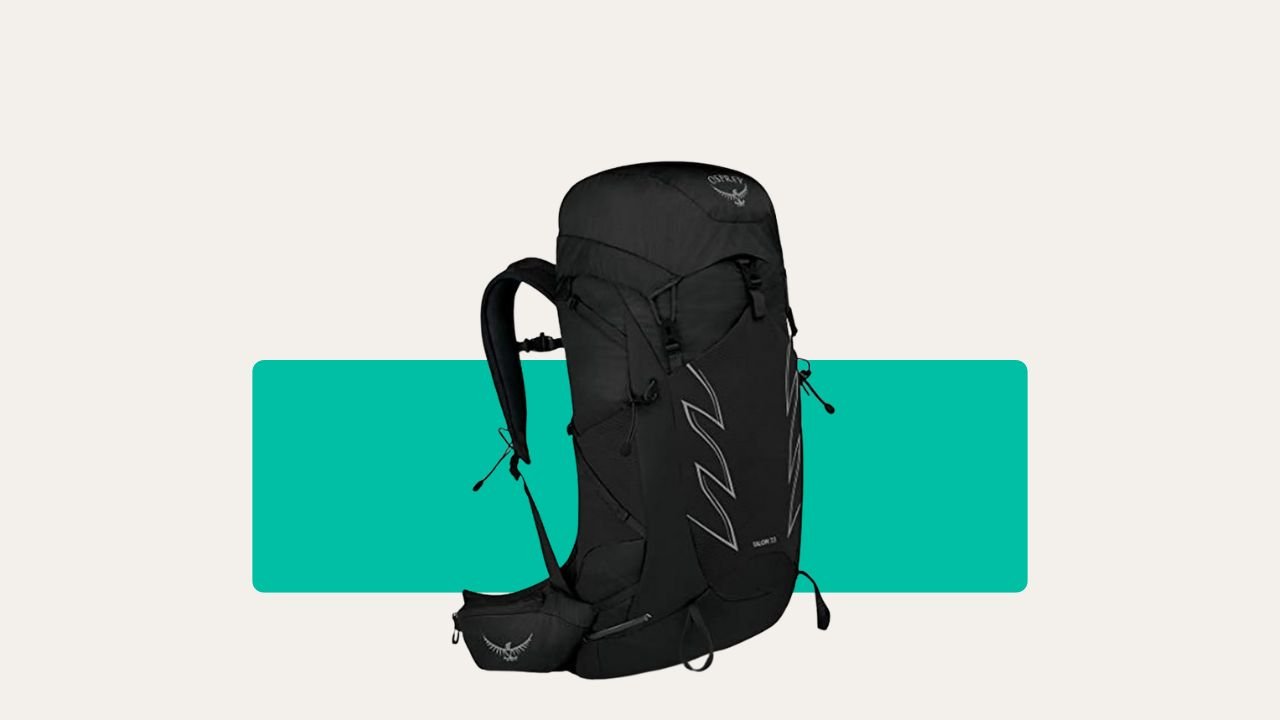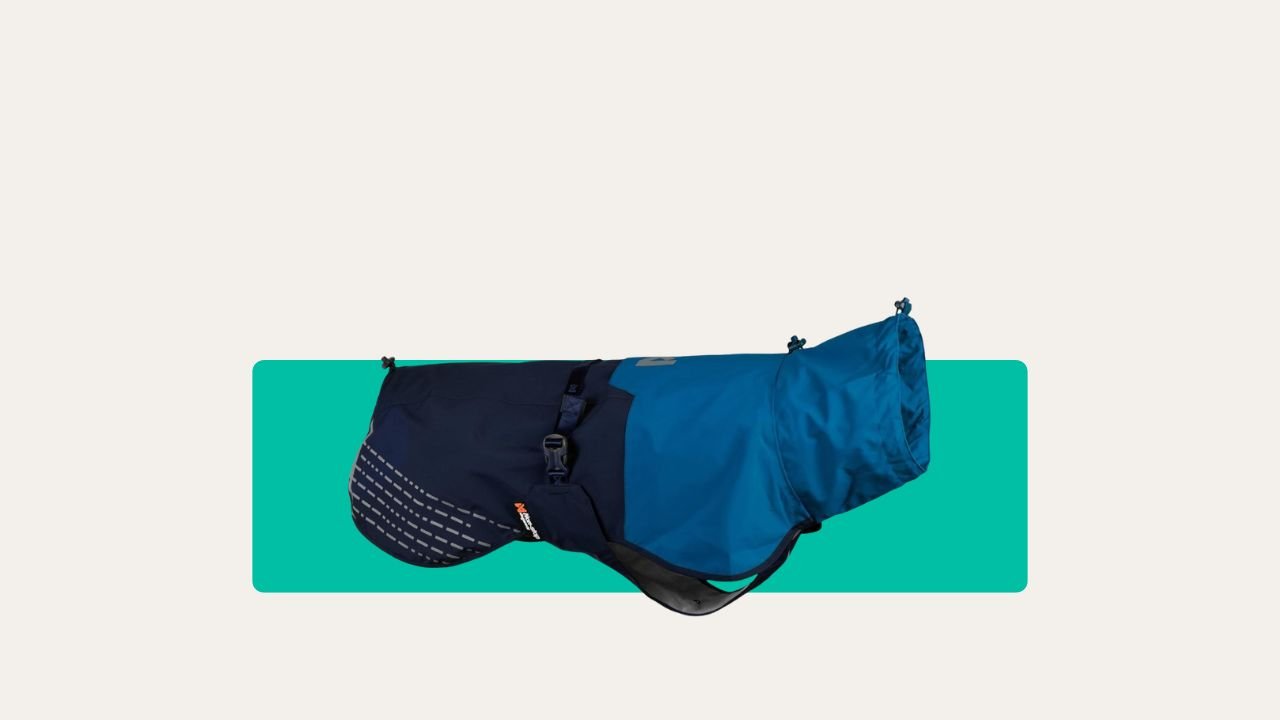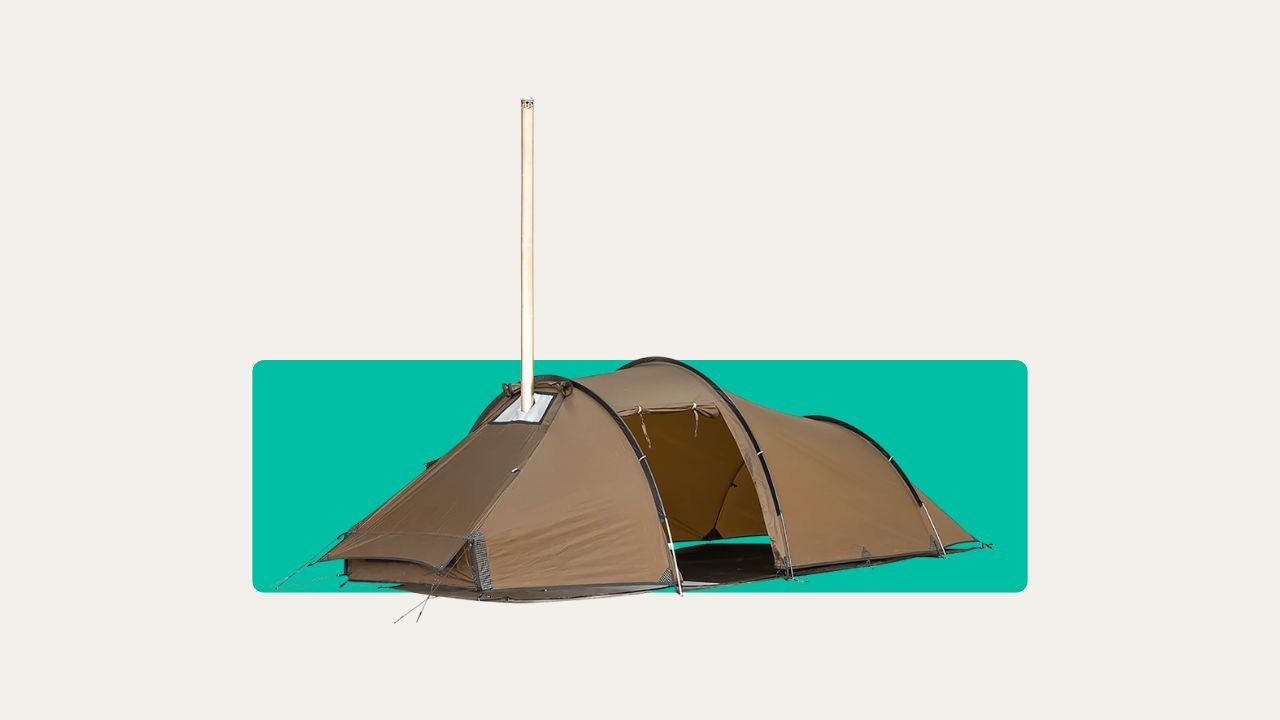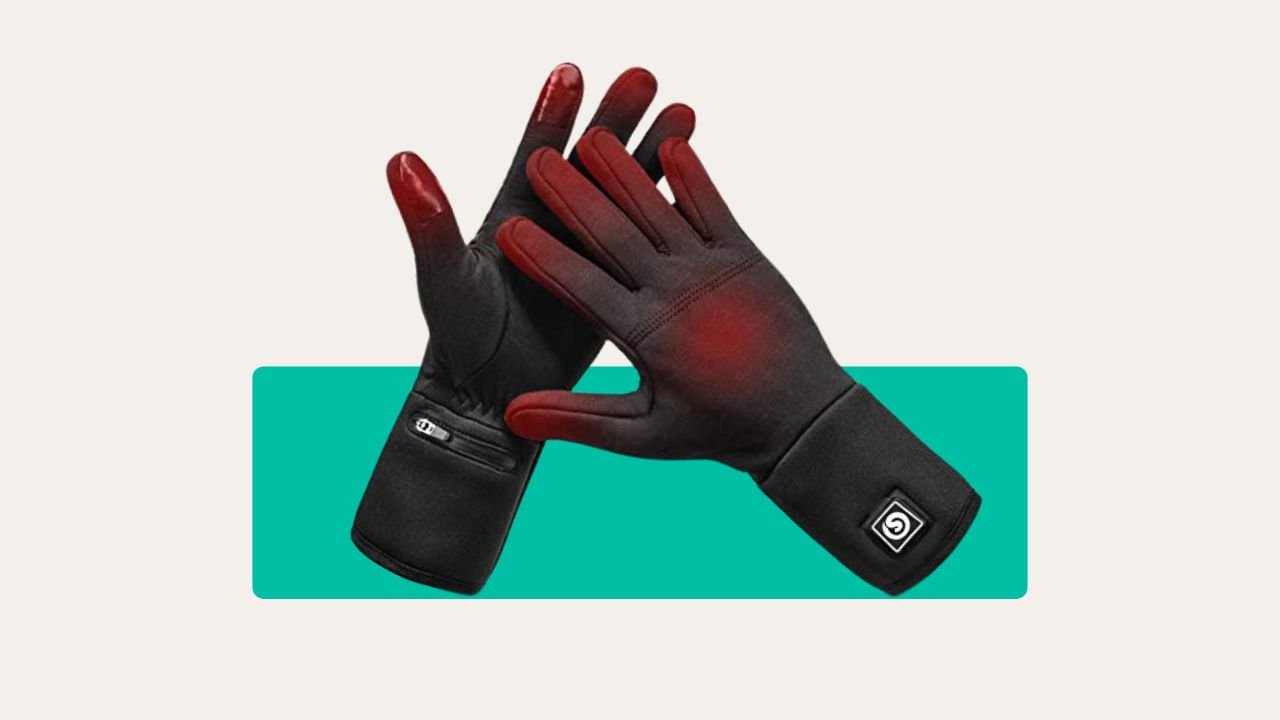Most people grab any “waterproof” jacket on the sale rail, thinking all raincoats are basically the same. That’s a mistake you’ll only make once when you’re pitched up in a Welsh downpour, shivering, wishing you’d spent that bit more. I’ve done it—huddled by the stove with a cheap jacket that soaked through by dinner. There are some jacket features that really do make all the difference out on the trail.
If you want to stay dry, warm, and comfortable, you need more than just a jacket with “waterproof” stamped on the tag. Here are the five must-have features to look for, plus a few insider tips to help you pick the right kit.
High Waterproof Rating: Don’t Settle for “Showerproof”
A lot of jackets claim to be waterproof but start to leak as soon as real rain arrives. The only way to know for sure is to check the hydrostatic head rating. This number tells you how much water pressure a fabric can handle before it soaks through.
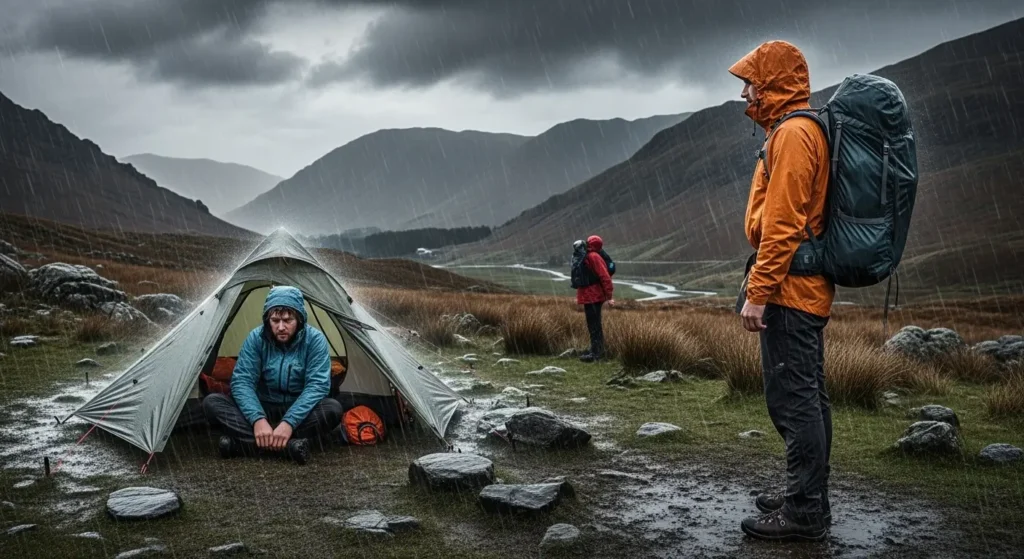
You want at least 15,000mm hydrostatic head (HH) for anything beyond light drizzle. If you’re serious about hiking or camping in the UK—think Peak District storms or Scottish autumn—you’ll want 20,000mm or more. Some top jackets like those with Gore-Tex go higher, up to 28,000mm HH.
Don’t get distracted by flashy colours or “waterproof” stickers. If the number’s not on the label, look it up online or ask in-store. Cheap jackets might be fine for a dog walk, but not for setting up camp in sideways rain.
I learned this lesson wild camping in the Lake District. I thought I’d saved money, but just ended up soaked through and freezing at 3am. Now I check ratings before I buy anything.
Real Breathability: Stay Dry Inside and Out
You can have the world’s most waterproof shell, but if it feels like wearing a bin bag, you’re going to be just as wet—from sweat, not rain. Breathability is just as crucial as waterproofing, especially when you’re slogging up hills or wrestling tent poles in a gale.
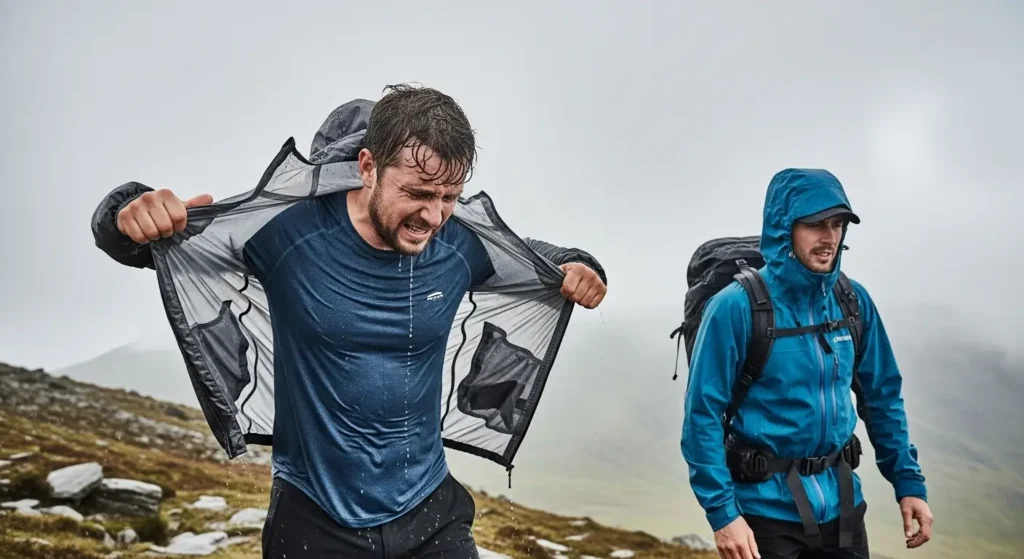
Look for the MVTR (moisture vapour transmission rate) or RET (resistance to evaporative heat transfer) numbers. You don’t need to be a scientist: for RET, lower is better (under 6 is great for high activity). For MVTR, higher is better (the best jackets boast 20,000g/m²/24h or more).
Fabrics like Gore-Tex and other membranes usually get it right. Avoid rubbery coats or cheap plastics. If you can’t find a breathability rating, try the old school test: put your hand inside, zip up, and stand in the shop for five minutes. If you’re sweating before you leave, imagine how you’ll feel hiking up Snowdon.
There’s nothing worse than peeling off a jacket to find your shirt soaked inside, even though it’s supposedly “breathable.” Trust me, misery follows. Get a jacket that breathes and you’ll thank yourself all season.
Adjustable Hood: Your Shield From the Worst
Most beginners ignore the hood. “It’s just for keeping your head dry, isn’t it?” I thought that too, until a coastal storm taught me otherwise. A good hood can be the difference between seeing where you’re going and getting battered by rain.
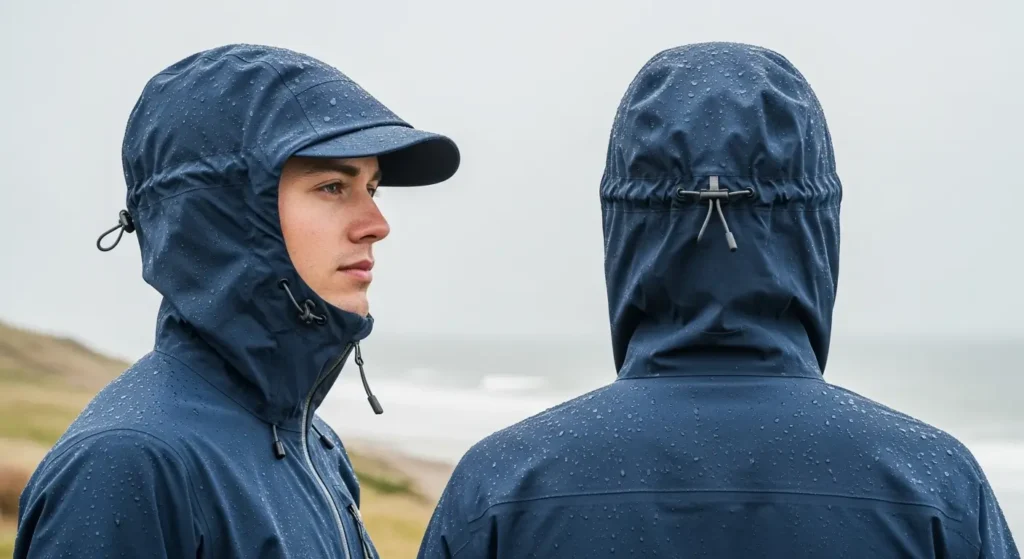
Make sure your hood is fully adjustable—look for drawcords on the sides and back. It should cinch down snugly but still turn with your head, not flop around and block your vision. Bonus points for a stiffened or wired brim, which keeps water off your face and eyes.
If you’re using a helmet (for climbing or cycling), check the hood fits over it. Try it on with the jacket zipped all the way up—you want full coverage without feeling choked.
The best jacket hoods move with your head so you can keep an eye on the trail, even in a sideways Lancashire squall.
Functional Pockets: Keep Gear Dry and Accessible
Jackets can have six pockets—but if you can’t use any with a rucksack on, what’s the point? Real-world pocket placement matters. Chest pockets or high hand-warmer pockets can be accessed even with your hip belt fastened. Lower “hand pockets” are often covered by your backpack’s straps.
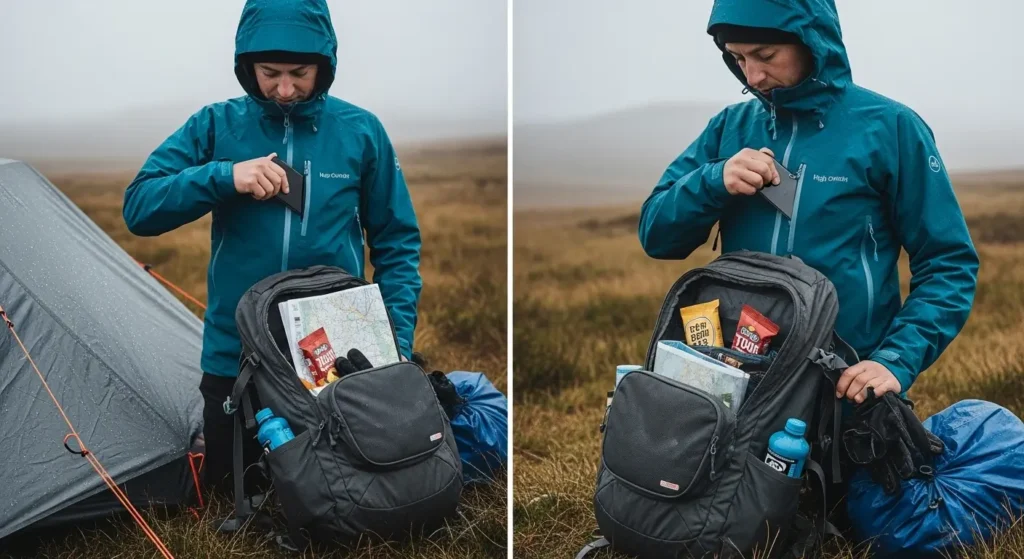
Look for water-resistant or covered zips, especially on main pockets—these help keep your phone, map, or cereal bar dry. At least one internal pocket for valuables like your phone is worth having, especially somewhere safe from drips.
On my last Scottish wild camp, I kept my phone in a chest pocket with a water-resistant zip—everything else in my pack was damp by morning, but my phone survived. That small feature can save your kit, and your mood.
Adjustable Cuffs and Hem: Seal Out Wind and Water
Don’t ignore the little touches. Adjustable cuffs (usually Velcro) let you tighten the jacket over gloves or seal out rain running down your arms. Elastic-only cuffs are cheap and cheerful but won’t keep water out in proper weather.
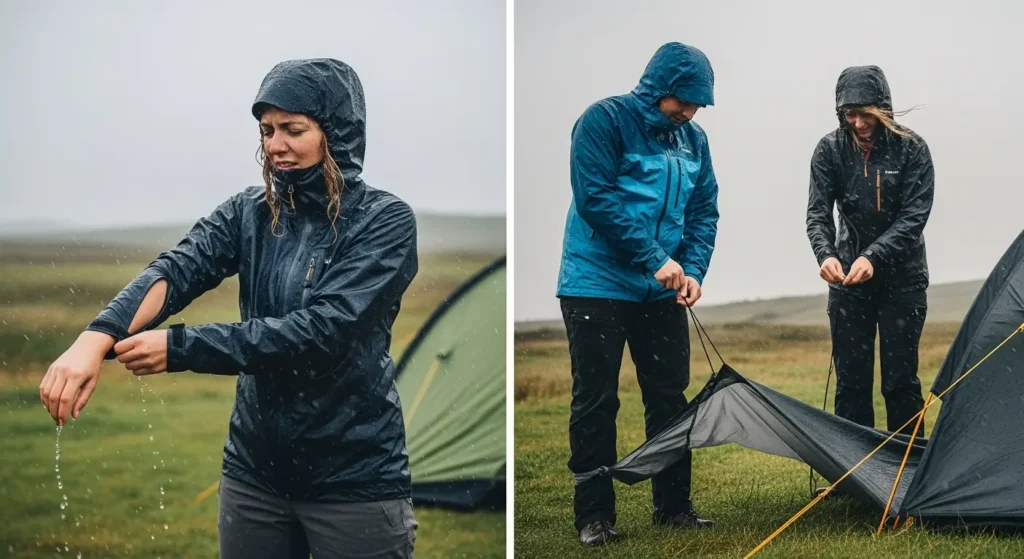
A drawcord hem lets you tighten the bottom of your coat, trapping warmth and blocking draughts when the wind is up. If your jacket just flaps open at the bottom, rain and wind will find a way in—especially when pitching a tent in rough weather.
Once in Dartmoor, my mate’s jacket had no cuffs and no hem drawstring. She spent the night soggy and grumbling. These small, boring features stop you suffering on camp.
Extra: Fit, Durability, and Packability
Now, don’t get hung up on numbers alone. The jacket still has to fit you and your kit. Try it on over your warm layers—as you would wear them on a frosty morning in the Brecon Beacons. Can you zip it up comfortably? Can you move your arms? Will it go over gloves?
Durability matters if you’re bashing through brambles or scrambling over rocks. Look for reinforced areas on the shoulders and arms if you’re going off-track. Lightweight doesn’t have to mean flimsy, but the cheapest jackets can rip easily.
Weight and pack size are next. The best jacket is the one you’ll actually carry. If it packs down into its own pocket or a tiny stuff sack, you’re much more likely to have it with you when the weather turns. Some of my mates keep an ultralight shell in their bag at all times—it weighs nothing, but saves your trip when that surprise downpour hits.
Quick Buying Tips: What to Check Before Spending Your Money
- Read the hydrostatic head and breathability specs—ignore marketing waffle
- Try the hood, cuffs, and hem all done up—make sure you can adjust them with cold hands
- Check pocket positions with your backpack on—are they usable?
- Move around: can you use your arms, or is the jacket too snug?
- Weigh it in your hand: will you actually carry it on long walks?
- Ask about care—do you need to reproof it regularly?
Don’t get sold on brand names alone. Some shops will try to upsell the latest fabric buzzword, but a jacket with these core features, that fits well, will serve you through gales, drizzle, and awkward tent pegs.
Final Thoughts: Why These Features Matter Most
I’ve spent enough soggy nights and cold mornings in the UK hills to know that cutting corners with your waterproof jacket simply isn’t worth it. It’s not about having the fanciest kit, but about choosing smart features that make all the little difference.
A proper waterproof rating, real breathability, an adjustable hood, usable pockets, and tight cuffs and hem—that’s your survival check-list. Add in a fit that allows for layers, fabric tough enough for UK thorns, and a weight that won’t have you cursing halfway up Helvellyn.
Pick a jacket that ticks these boxes, and you’ll enjoy every trip more—dry, warm, comfortable. You’ll spend less time worrying about the weather and more time enjoying the wild. And in the end, that’s what camping and hiking are all about.
For more tips on how to kit yourself out for the outdoors, check out our complete camping gear guide. Stay dry, pitch smart, and see you on the trail.

